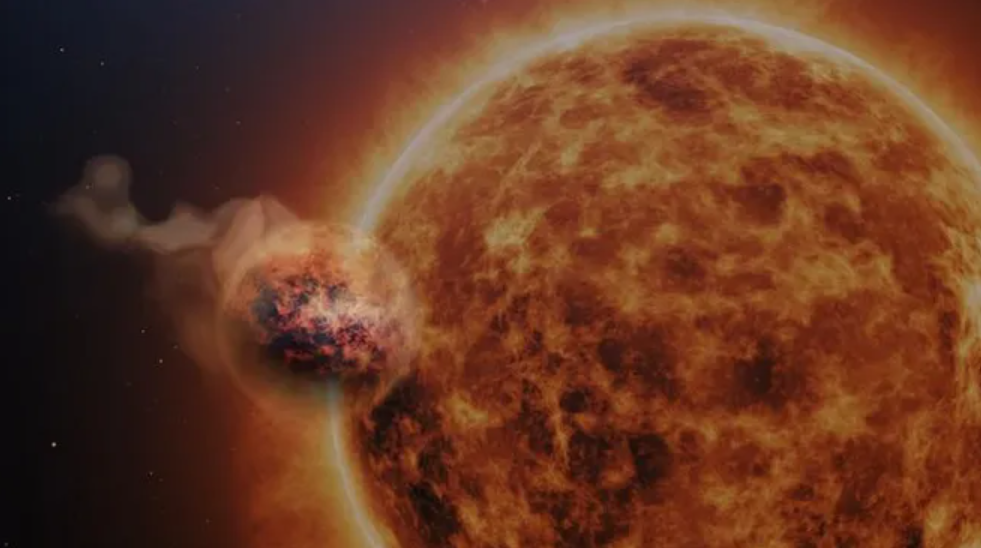
Simulation image of planet WASP-107b and its central star
Using data from NASA's James Webb Space Telescope, a team of European astronomers has been able to draw some conclusions about the atmospheric composition of WASP-107b, the solar system's Neptune-like gas giant.
The results showed that WASP-107b, about 200 million light-years from Earth, is not only incredibly hot (with an upper atmospheric temperature of more than 480 degrees Celsius), but it is also home to sand clouds.
Not only that, sand clouds can also create rain of sand down to the planet's surface, according to a report published in the journal Nature .
Previously, astronomers paid special attention to WASP-107b because this planet has a light weight and a structure comparable to cotton candy, meaning it has a formidable appearance but a light interior.
Despite its Jupiter-sized size, WASP-107b has a mass just 12% that of the solar system's largest planet. The planet orbits a star that is cooler and smaller than our sun.
Thanks to WASP-107b's rather thin structure, the European team of experts was able to see through the planet's atmosphere.
Co-author of the report, Dr. Achrène Dyrek of the University of Paris (France), said the new discovery of the planet was made possible thanks to the James Webb telescope, which provides the ability to analyze the atmospheric structure of distant planets.
Source link






























![[Photo] National Assembly Chairman attends the seminar "Building and operating an international financial center and recommendations for Vietnam"](https://vphoto.vietnam.vn/thumb/1200x675/vietnam/resource/IMAGE/2025/7/28/76393436936e457db31ec84433289f72)





































































Comment (0)